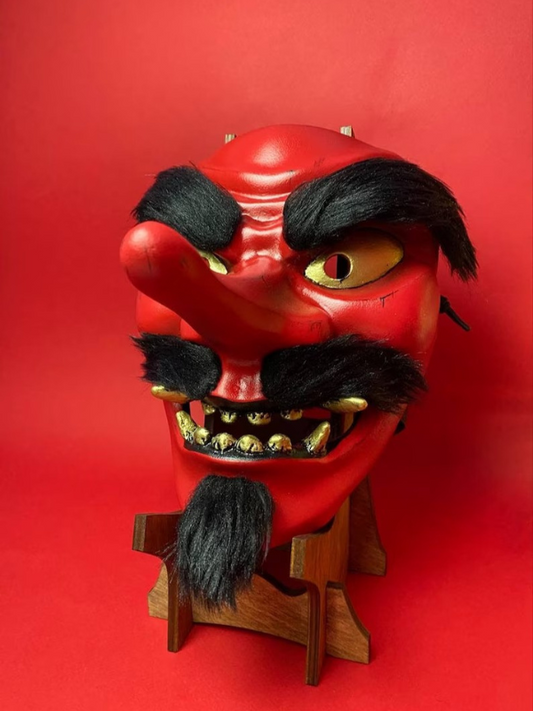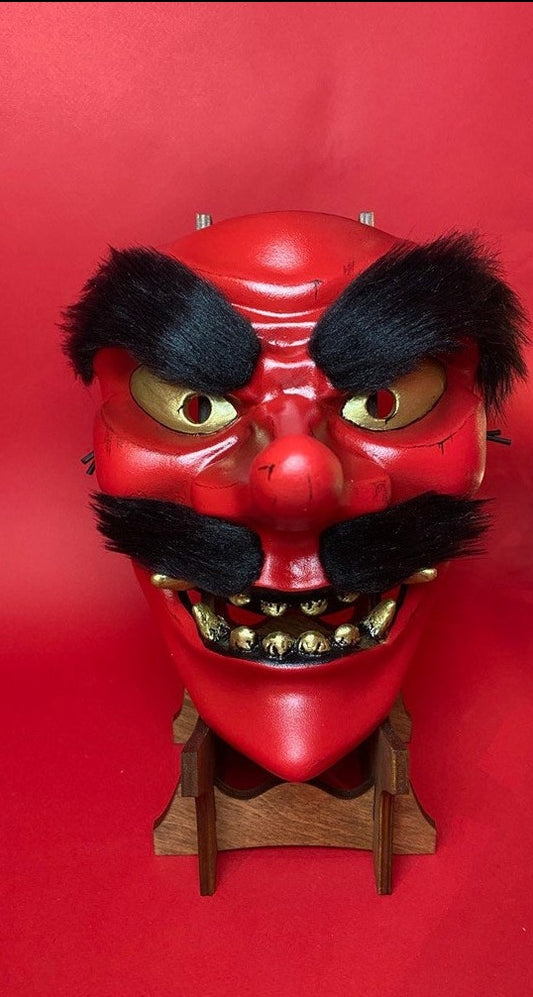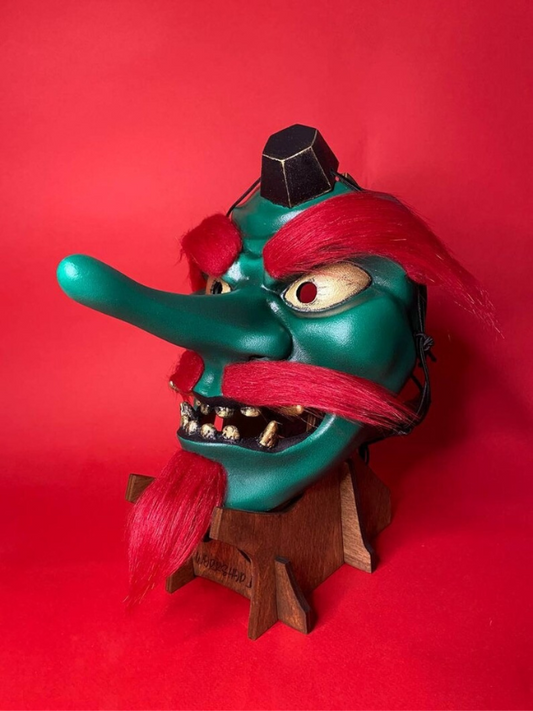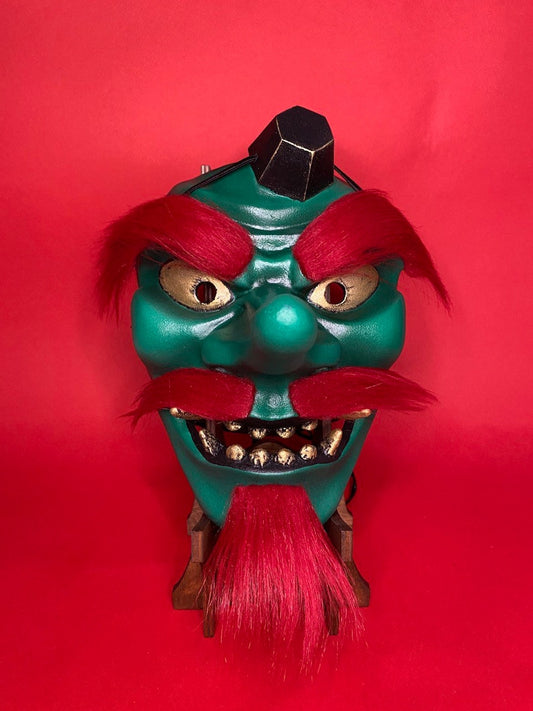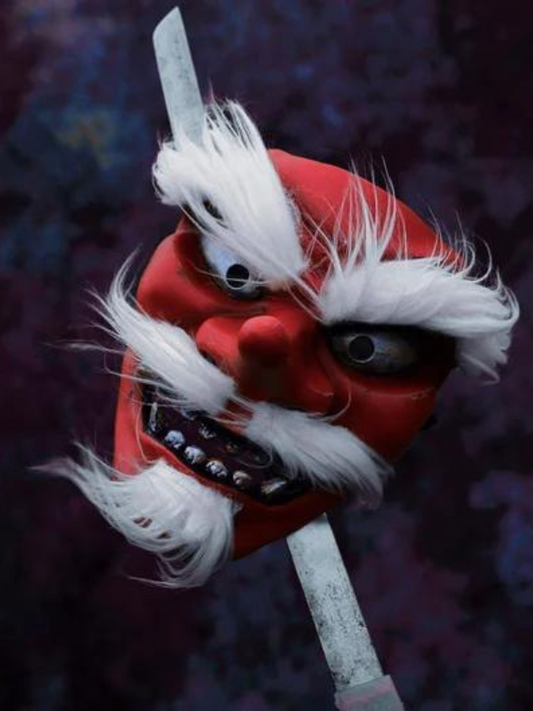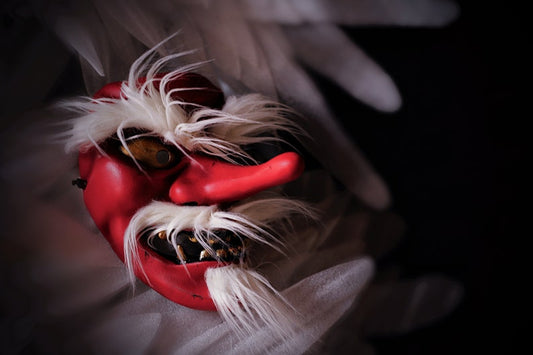Tengu Masks: The Icon of Folklore and Spiritualism
Tengu masks hold a special place in Japanese mythology and folklore, symbolizing the supernatural beings known as Tengu. These creatures are considered both powerful and mischievous, often serving as protectors or tricksters depending on the context.
Tengu masks, with their distinctive, often exaggerated features, are powerful symbols in Japanese culture. Deeply rooted in folklore, spiritualism, and theatrical tradition, these masks play an essential role in various cultural practices.
Origins and History of Tengu Masks
The concept of Tengu can be traced back to the Heian period (794-1185) in Japan, with early depictions influenced by the Chinese Tiangou, a celestial dog that devours the sun or moon during eclipses. As the Tengu evolved in Japanese mythology, they began to adopt more bird-like features, reflecting the native reverence for birds as spiritual messengers.
The Tengu's bird-like appearance is most evident in the two main types of Tengu: Karasu-Tengu (Crow Tengu) and Konoha-Tengu (Leaf Tengu). Karasu-Tengu are depicted with a crow's beak and wings, while Konoha-Tengu have a more human-like appearance with a long nose and bird-like feathers.
In Japanese folklore, Tengu are traditionally seen as disruptive demons and harbingers of war. However, over time, their image evolved into protective, if still dangerous, spirits of the mountains and forests. Tengu are typically depicted as having both human and avian characteristics, the latter often symbolized by wings, a beak, or a long nose.
In the realm of traditional Japanese theater, particularly in Noh and Kyogen, Tengu masks are used to portray these mythical characters. Actors wearing these masks bring to life stories about Tengu, often engaging in moral narratives or exploring themes of pride and vanity.
Beyond the theater, Tengu masks also feature in Shinto festivals and rituals, symbolizing the connection with nature and mountain deities. During the Yamabushi mountain ascetic rituals, participants often wear Tengu masks, reflecting the belief in Tengu as protectors and teachers of these warrior monks.
In modern times, Tengu masks have found a place in celebrations, parades, and cosplay events, serving as a vibrant and intriguing element of Japanese culture. They are also popular as decorative pieces, embodying the rich folklore and cultural traditions of Japan.
Design and Meaning of the Tengu Mask
Tengu masks are designed to capture the unique features and expressions of these mythical beings. Karasu-Tengu masks typically have a fierce expression, a red face, and a prominent beak, emphasizing the creature's bird-like nature. Konoha-Tengu masks, on the other hand, feature a long, protruding nose, a red or white face, and a somewhat more benevolent expression.
The masks often incorporate elements such as bushy eyebrows, facial hair, and bird feathers, highlighting the Tengu's dual nature as both human and bird. The vibrant colors used in Tengu masks, such as red, black, and white, signify their supernatural origins and the powerful energies they embody.
Tengu masks, typically made from materials such as clay, wood, or paper-mâché, capture these unique characteristics vividly. They generally exhibit a red human face, with a large, long, or exaggerated nose, a defining feature of Tengu. The facial expression can range from stern or fierce to comical, reflecting the complex and diverse nature of Tengu in folklore.
Roles and Significance in Japanese Culture
Tengu masks play an essential role in various aspects of Japanese culture, from religious rituals and festivals to theatrical performances and martial arts.
- Religious Context: Tengu are closely associated with Shugendo, an ascetic practice that combines elements of Buddhism, Shintoism, and Taoism. Practitioners, known as Yamabushi, often wear Tengu masks during rituals and ceremonies, symbolizing their connection to the mountain spirits and their pursuit of enlightenment.
- Festivals: Tengu masks are also prominently featured in Japanese festivals, such as the Tengu Matsuri, where performers don elaborate Tengu costumes and masks, engaging in dances and processions to ward off evil spirits and bring good fortune to the community.
- Theatrical Performances: In traditional Japanese theater, such as Noh and Kabuki, Tengu masks are used to portray the mythical beings in various stories and legends, often highlighting their dual nature as both protectors and tricksters.
- Martial Arts: The Tengu's association with martial arts is rooted in legends of Tengu teaching the art of war to legendary warriors and samurai. Some martial arts schools, particularly those focused on swordsmanship, incorporate Tengu masks and imagery into their practices and training halls, reflecting the Tengu's influence on Japanese martial arts.
Influence on Art and Pop Culture
Tengu masks have also inspired various forms of art and pop culture in Japan. Artists have created intricate woodblock prints and paintings featuring Tengu, often showcasing their supernatural abilities and connection to nature.
Nowadays, Tengu have been incorporated into manga, anime, and video games, reflecting their enduring popularity and cultural significance place in Japanese culture and abroad, embodying the rich mythology, spirituality, and artistic heritage.
In essence, the Tengu mask is a captivating symbol of Japanese culture, representing elements of folklore, spiritualism, and dramatic performance. Whether used in theatrical plays, religious ceremonies, or as a piece of art, the Tengu mask continues to enchant with its distinctive features and the depth of meaning it holds.

